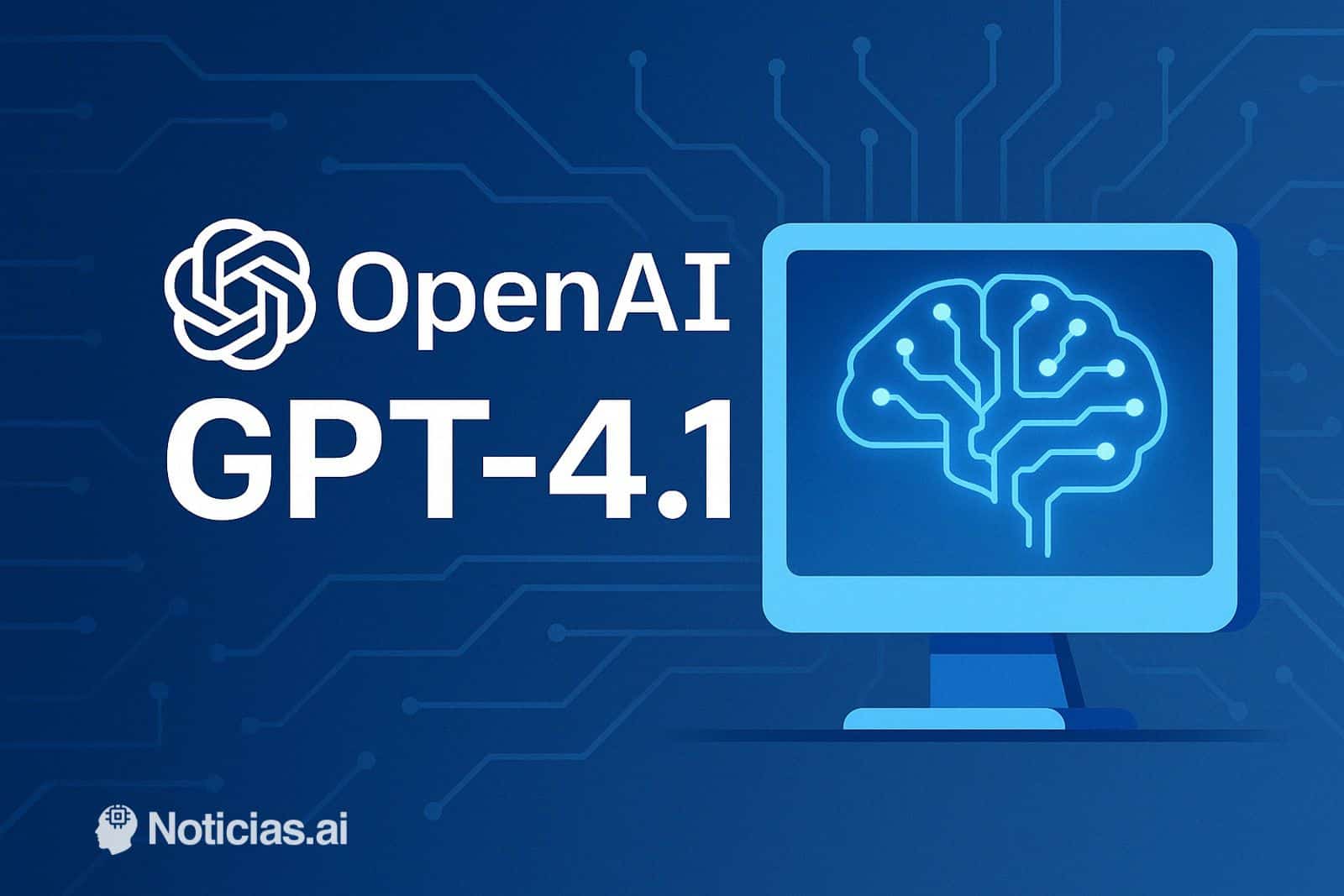The company introduces GPT‑4.1, mini, and nano: three models that expand the possibilities for software development, autonomous agents, and long-context processing
OpenAI has officially launched the new family of language models, GPT‑4.1, a technical evolution that enhances the ability of its systems to tackle complex programming tasks, follow instructions with greater fidelity, and process large volumes of context in both natural and multimodal language.
This new series includes, for the first time, the GPT‑4.1 mini and GPT‑4.1 nano models, designed for use cases with latency or budget constraints. This release also marks the beginning of the gradual phase-out of GPT‑4.5 Preview, which will no longer be available in the OpenAI API starting July 14, 2025.
Key Advances in Programming, Instructions, and Context
Among the main improvements of the GPT‑4.1 series are:
- Unprecedented coding capability: The main model achieves a 54.6% accuracy on the SWE-bench Verified benchmark, significantly outperforming GPT‑4o (33.2%) and GPT‑4.5 (38%). It is particularly effective in code editing, generating diffs, and precise tool usage.
- Better tracking of complex instructions: GPT‑4.1 shows a 10.5% improvement over GPT‑4o on the MultiChallenge benchmark. Its ability to respect custom formats, avoid errors, and maintain consistency across multi-turn conversations makes it a more reliable tool for developers and conversational agents.
- Understanding of long context up to 1 million tokens: A record number that allows for analysis of legal databases, extensive financial documents, or large code repositories. Improvements have also been made in the retrieval of scattered information and multi-hop reasoning in long texts.
- Visual and multimodal enhancements: Particularly in GPT‑4.1 mini, which surpasses GPT‑4o in tasks involving both text and images, such as scientific graphs, visual math problems, or video comprehension without subtitles.
Three Models, Three Solutions
| Model | Context Limit | Main Advantages | Price per 1M tokens |
|---|---|---|---|
| GPT‑4.1 | 1 million | Maximum precision and overall capability | $2.00 input / $8.00 output |
| GPT‑4.1 mini | 1 million | Fast, cost-effective, high overall performance | $0.40 / $1.60 |
| GPT‑4.1 nano | 1 million | Ultra-fast, ideal for lightweight tasks | $0.10 / $0.40 |
The nano version stands out as the fastest and most efficient model developed by OpenAI to date, ideal for tasks like classification, autocompletion, or real-time entity extraction. It also reduces costs by 83% compared to GPT‑4o mini, according to the company.
Real-World Use Cases and Enterprise Testing
Companies like Thomson Reuters, Blue J, and Carlyle have tested GPT‑4.1 to validate its improvements. Blue J, specializing in AI-based tax solutions, recorded a 53% improvement in accuracy when switching from GPT‑4o to GPT‑4.1.
Thomson Reuters achieved a 17% improvement in multi-source legal analysis, crucial for automating complex legal tasks. Carlyle employed the model to extract detailed financial information from extensive documents, including PDFs and spreadsheets, with a 50% accuracy improvement.
Discounts and API Enhancements
OpenAI has increased the prompt cache discount to 75%, facilitating quicker responses in repetitive tasks. Additionally, the new mini and nano versions are available at reduced pricing in batch mode (Batch API).
With GPT‑4.1, OpenAI solidifies its position as a leader in language models and sets a new standard for developers, researchers, and businesses seeking powerful, scalable, and cost-effective solutions for their intelligent applications.
Source: AI News

